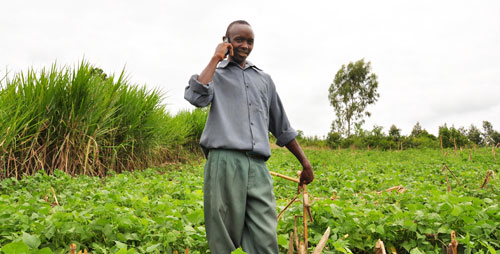This is a guest blog by Fabio Sergio, Vice President of Creative, frog & Global Lead, frogImpact.
There’s no doubt that mobile technologies offer new opportunities to address pressing societal problems in emerging economies around the world.
During the recent Mobile 360 Africa event organised by GSMA, the potential of mobile services to continue delivering life-changing value remains very much at the centre of a discussion involving the entire mobile value ecosystem. Mobile network operators, device manufacturers and mobile service providers convened with representatives from the social and public sector to share best practices, identify remaining roadblocks for innovation, and agree on a common agenda.
One of the key insights from the event was that accounting for the specific human, technical, and economic limitations of specific markets within emerging economies is essential for the success of innovative mobile solutions. Beyond the specific cultural nuances of any given market, some of these contextual factors in emerging economies include lower levels of literacy (including financial and technical literacy), reduced financial liquidity, intermittent wireless connectivity or limited bandwidth, and low availability of electrical power, especially in rural locations.
A service designed to take into account these contextual factors is well positioned for success. A good example is Kilimo Salama (meaning “safe farming” in Swahili), an anti-drought insurance for smallholder farmers that’s been successfully piloted in Kenya by the Syngenta Foundation) and recently spun off into a for-profit company called ACRE.
First and foremost Kilimo Salama answers real-world human needs: drought can force smallholder farming families to reduce all non-essential expenses to survive, which can include education for children. Insurance can avoid the onset of this type of “sheer survival” cycle, which results in long-term consequences for farming families and their children. Secondly Kilimo Salama requires minimal effort all across the lifecycle of the product. It fits seamlessly and transparently in a farmer’s workflow, the only difference being the need to send an SMS to the existing process of buying seeds. Finally, it does not require any action to redeem the bonus when eligible, taking away the usual bureaucratic hassles that constitute a barrier to adoption of insurance in the first place. Kilimo Salama is ultimately a solution that hides legal, commercial, and technical complexity behind a simple SMS, letting farmers focus on caring for their crops and their families.
A well-designed user experience such as the one offered by Kilimo Salama is often one of the key success factors of mobile-enabled products and services. To be more attuned to the real-world needs and aspirations of people living in poverty, the world of social innovation has been turning more and more towards the use of Human-Centered Design (HCD). HCD is an innovation process comprising a diverse set of design methodologies that structurally involve the intended customers and end-users of a product or service into its very definition, development, deployment, and evolution. This extensive involvement across the whole product development process ensures a final product that meets the real needs of people and speaks to their aspirations and dreams.
The application of a Human-Centered Design process helps to ensure that solutions take into account and leverage existing mental models and habits, so that customers and end-users will see a product or service naturally fit in their lives or in their workflows. It is for these reasons that organizations like GSMA or CGAP partner with HCD experts like frog. Additionally, foundations and donors like (USAID or DFID) are asking the organizations they support to adopt human-centered innovation methodologies on many of their programs around the globe.
In addition to the adoption of HCD, the commercial success of a mobile-enabled product targeting emerging economies is of course dependent on many other factors, including the trust inspired by a well-known local or global brand, effective communication of the benefits of the service, sensible pricing for the intended audience, and where needed, quality content in a format that makes it timely, accessible, and actionable. In most cases no single player in the mobile value ecosystem is capable of bringing together all of these different but complementary facets. This is why an effective partnership strategy can result in a sum larger than the sheer addition of the aforementioned contextual and human factors.
Evidence of such a virtuous ecosystem can be found in the work of IKSL, which offers rural farmers in India a bundle of mobile services intended to educate and inform them. The service brings together different actors in the value chain, including trusted fertilizer brand IFFCO and mobile network operator Airtel together with local quality content providers. The secret behind the commercial success of this initiative is the focus on value for customers and all commercial partners involved. This has resulted in a mutually reinforcing business model that accounts for every actor in the value and human ecosystem.
These examples from the mAgriculture sector point to two key pillars for generating both business and societal value. First, use Human-Centered Design to remain customer-centric before, during, and after the launch of a product or service. Second, align partners around a common vision for success, thus ensuring that partnerships advance the success of the whole ecosystem, and not dominance of one of its actors.


